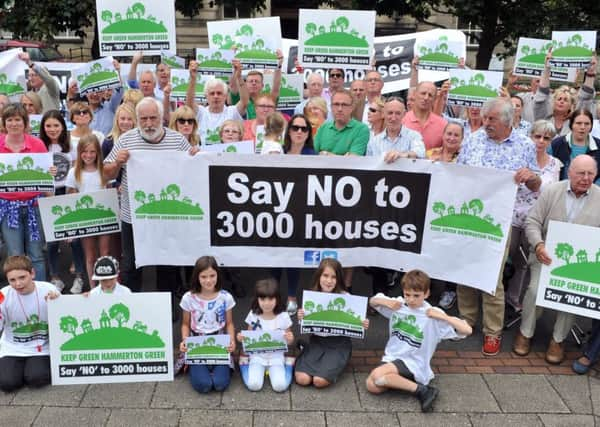Rebecca Pullinger: Homes crisis does not need to impact on our green belt


When asked, 59 per cent of people say that the countryside and scenery is what makes them most proud of Britain.
But we are also in the grip of a housing crisis that threatens to price a generation out of home ownership and leaves rents spiralling in towns and cities across the country.
Advertisement
Hide AdAdvertisement
Hide AdThis housing need is undoubtedly putting pressure on our green spaces, across Yorkshire at least as much as anywhere in England, thanks to its thriving cities and the dramatic beauty of its countryside. However, framing the challenge we face as one of building new homes versus protecting the countryside is wrong; we have a duty to, and can do, both.
To meet this challenge we have to be creative about where we build, re-use derelict buildings and poorly used land (otherwise known as brownfield land), and prioritise the regeneration of urban areas over building on our countryside. That’s why CPRE made it a priority to campaign for a national survey of suitable brownfield land. Local authorities are now required to produce registers of available brownfield land in their areas that is suitable for housing and review them every year. Our analysis of these registers confirms what we have been saying for a number of years – England has enough brownfield sites to build more than a million homes.
The significance of this number shouldn’t be under-estimated – the Government has previously maintained that brownfield land could only provide between 200,000 and 400,000 homes.
Neither should brownfield’s potential to make a significant contribution to alleviating the housing crisis; nationally, two-thirds of this housing capacity could be delivered in the next five years - and in areas with high housing need.
Advertisement
Hide AdAdvertisement
Hide AdThere is an increasingly strong case for prioritising the use of suitable brownfield land over greenfield. It can help regenerate our cities, remove local eyesores and puts housing where it is needed most – close to jobs and services. Developments on greenfield land are often situated on the outskirts of our cities and towns, with poor connecting infrastructure and limited amenities. Of course, not all brownfield sites should be redeveloped: it’s important to recognise that many are important for wildlife, heritage or recreation reasons, and these should be protected, or sensitively re-used in a way that maintains their interest.
Yorkshire is no stranger to the re-use of land. Its industrial past means there are large numbers of derelict sites that would be best used for housing, but are currently sitting idle. This land needs to be recycled and repurposed to better serve our current needs and protect the celebrated landscapes Yorkshire is known for.
Across the region, local authorities have identified space for more than 100,000 homes on suitable brownfield land, equivalent to six years’ worth of housing need; 65,000 of these homes are deliverable in the next five years.
But there is a lack of action to turn the potential of brownfield into homes. This is a national problem that is reflected in Yorkshire and the Humber – half of all identified sites don’t yet have planning permission, including 21,000 that could be delivered in the next five years.
Advertisement
Hide AdAdvertisement
Hide AdThere are also a number of local authorities in Yorkshire that seem to be ignoring the potential of brownfield, while continuing to plan homes for the green belt. In Sheffield, there is enough suitable brownfield land to satisfy 10 years of housing need, yet there are over 6,000 homes planned on the city’s green belt. The story is similar in Bradford. The huge potential for suitable brownfield development is being missed, at the same time as 11,000 homes are earmarked for the green belt.
But there is a golden opportunity coming up to change this. With the Government’s imminent review of planning policy for England, there’s a chance to embed the proper use of suitable brownfield in every planning decision made across the country.
Given that building on greenfield sites is often more profitable than brownfield for developers, and avoids the potential complexity of working on a previously developed site, developers won’t jump without being pushed – so we need the Government to commit to a strong brownfield-first policy that prioritises the redevelopment of urban brownfield with good access to services. This means empowering councils to refuse permissions for greenfield sites when there is a suitable brownfield alternative.
We also need to be in the business of building thriving communities, and the Government must provide better guidance to local authorities to help them identify all opportunities on previously developed land, not just housing.
Advertisement
Hide AdAdvertisement
Hide AdThe abundance of suitable brownfield land means we can have our cake and eat it. Building the houses we need doesn’t have to come at the expense of the countryside that inspires so many.
Rebecca Pullinger is Planning Campaigner at the Campaign to Protect Rural England which has published this month a new report entitled State of Brownfield 2018.